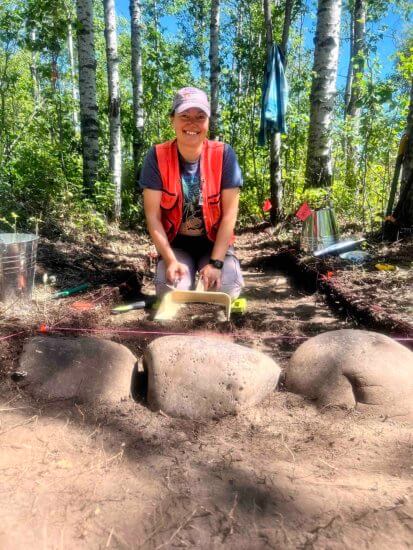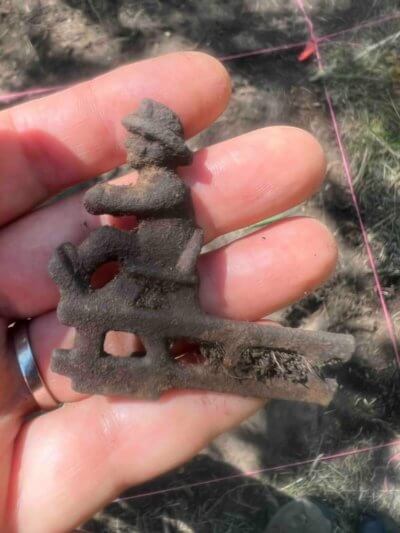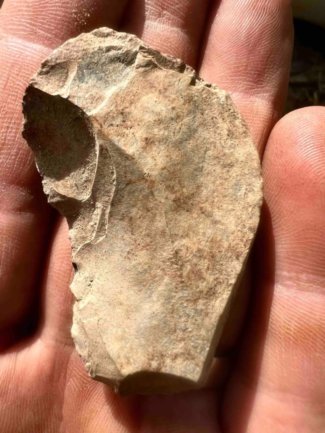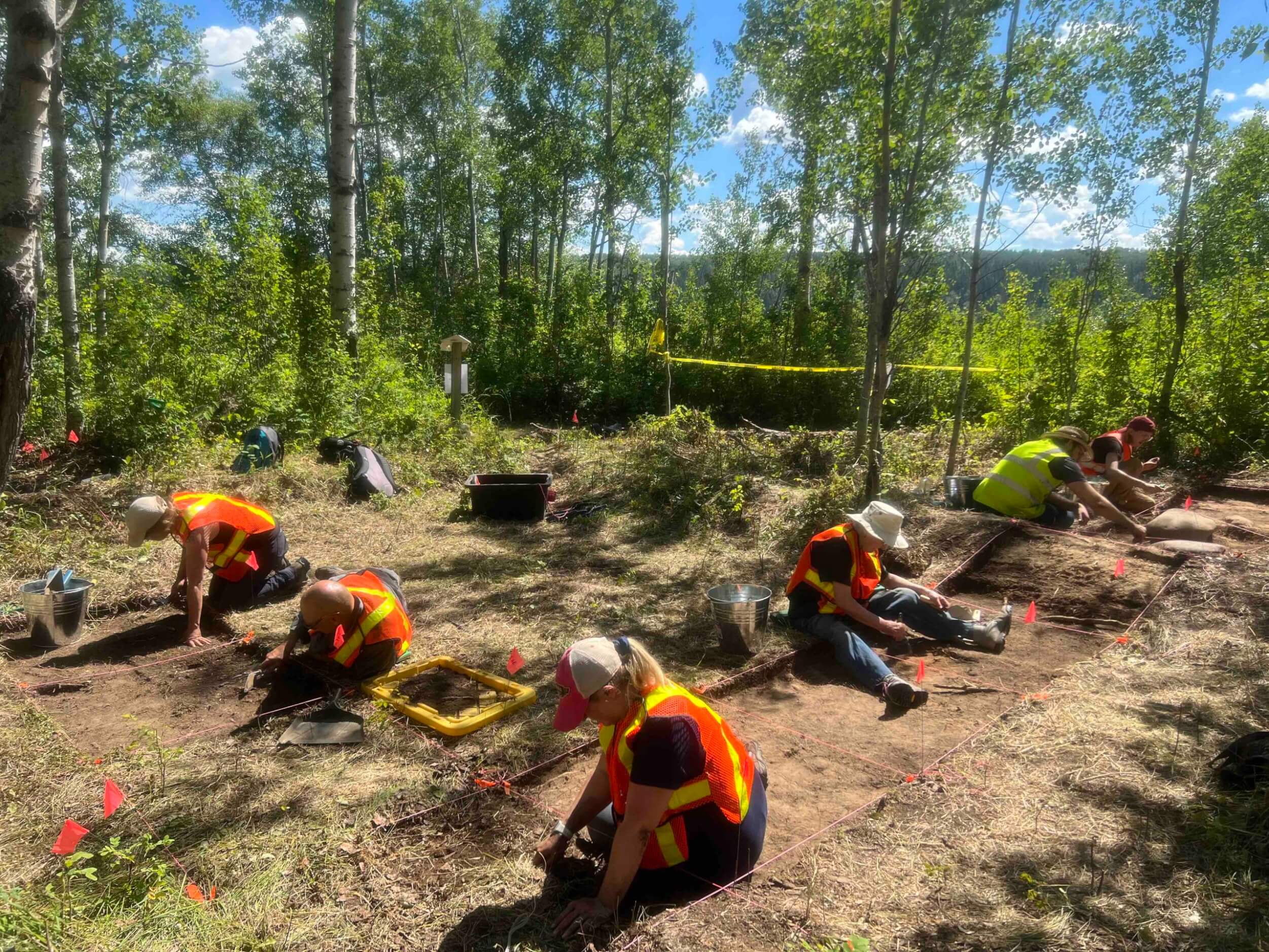Athabasca University associate professor Dr. Meaghan Peuramaki-Brown is digging into an Albertan boomtown's past to unlock a piece of history that might not have made the history books

As an archaeologist, Dr. Meaghan Peuramaki-Brown has spent years trying to understand why people pick up and move from one place to another and what they look for in a new home. She explores these topics by uncovering clues in the things people leave behind.
Much of Peuramaki-Brown's research has focused on the ancestral Maya civilization in Belize. But after moving to Grande Prairie, Alta. shortly before the pandemic, she and husband-collaborator Dr. Shawn Morton, an archaeologist with Northwestern Polytechnic, were forced to look a little closer to home.
The couple's first summer in the area was spent touring. On one of those trips, they came across the Old Bezanson Townsite, located within a municipal park.
"There was a wonderful history of the site that was done up by a local historian. And she had these big billboards at the site just telling all about the history of the town," recalled Peuramaki-Brown, an associate professor at Athabasca University. "It was a really short-lived town, which is a common story in Alberta."
That discovery got the couple thinking about how Old Bezanson's plight was similar to the communities they studied in Belize.
How the railway built and busted a town
Old Bezanson was founded in the early 1900s by A.M. Bezanson, a writer and adventurer from Nova Scotia who had grand hopes that the railway would come through the town. His efforts to promote the area helped encourage people to move and settle there.
Once it was announced that the railway would be built elsewhere, there was little hope for the town. The last resident left in 1926. All that remains at the townsite are building foundations and cellars; structures were hauled away to help develop the new hamlet of Bezanson, located about 15 kilometres away, near the highway.
The ancestral Maya town that Peuramaki-Brown and Morton study in Central America would be considered a potential example of a boomtown. Its appearance and occupation were relatively short-lived compared to most ancient Maya cities.
"And so, this brought it full circle. We could expand our research even though it seems to not make sense to compare an ancestral Maya town in Belize to an early 20th-century settler town in northern Alberta."
Related: AU prof digs deeper in Maya archaeology
How archaeology augments history
Beyond a few interpretive signs erected when the park opened in the 1980s that feature oral histories from the town's last living resident, little evidence of the former townsite remains above ground. Nature has completely taken over the area.
For the first summer of the project, the team surveyed the area using interpretive signs and lidar to find the footprints of where former buildings sat—foundations, cellar pits, and latrines.
In 2022, they focused on excavating the foundation of the bungalow house of the town's founder, A.M. Bezanson. The team found items stored or discarded in the space beneath the house, including pottery, bottles, and cans. They also found belongings that likely fell through spaces between floorboards, including a button. Also, a lot of rodent bones. Around the house foundation, they found a 1910 silver coin, nails, window glass, bullet casings, and more.
Archaeological studies of settler towns such as Old Bezanson can uncover details of daily life in ways that aren't typically recorded in official historical narratives.
"People, especially when it comes to official historical narratives, don't normally record details of their everyday lives," explained Peuramaki-Brown. "They don't write about the things they have in their kitchen; they don't write about basic practices. Archaeology contributes to our understanding of those more mundane and minute details."
For example, this past summer the team found part of a child's cast iron fireman. This would be something that might not have been part of the official historical record, but it tells the story of the more historically silent residents. In this case, there was a photo of Bezanson's kids—Frank and Jim—playing outside in the same area the toy was found, which led the team to believe the toy belonged to his children.

Uncovering Indigenous histories
While excavating, the research team also found pre-settler Indigenous stone tools deeper in the earth, below settler materials. Peuramaki-Brown wasn't surprised by the findings. The region is the traditional territory for many Indigenous groups, who are often left out of history books.
"If Indigenous Peoples are mentioned, it's often in passing," said Peuramaki-Brown. "They were here before, or they helped [settlers] move or build something. We're really interested in revealing a more complex and entangled view of the relationships between settlers and Indigenous Peoples who were not only there at the same time, but also long before, and how the Bezanson landscape developed from deep history all the way through to recent times."

Community members dig in
Peuramaki-Brown and her team wanted to ensure that every project stage included community members to help cultivate an interest in archaeology. Early on, they hosted a town hall where people could ask questions and propose ideas.
"I've rarely approached an archaeological project where it seems to be, hands down, people were in favour of doing it," she said. This year, they expanded their field season to include more volunteers from the community. They also hired students to assist: local high schooler Riley Steidel, now an anthropology undergrad at the University of Alberta, and AU Anthropology program student Isabelle Jensen, currently working with a contract archaeology firm.
They've also partnered with local historian Wanda Zenner to see how the archaeological record lines up with historical documentary evidence.
"We're now part of the greater Grande Prairie region community," said Peuramaki-Brown. "To be an active and responsible member of a community means learning about its history and how it impacts people who live here today, whether they realize it or not."
Learn more about the Old Bezanson Archaeology Project
Learn more about the Stann Creek Regional Archaeology Project
